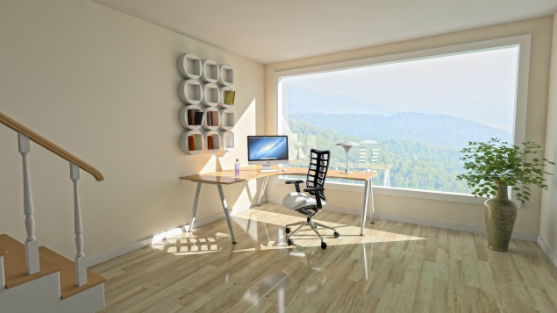
Lights, Camera, Action! Time to Stage your Home.
Image by Arek Socha from Pixabay
"People buy with emotion and then backfill with logic" or at least that is what our marketing professors taught us in college. If that is true, then snagging a buyer for your home requires moving their emotions. They need to FEEL something when they come to the property. How about making them feel like they just came home?
When you take the time and effort to stage your home, you set up all the key rooms with furniture so that the prospective buyer can envision what could be done with the space. It doesn't matter that the furniture and maybe even the purpose for the room will be different; staging helps buyers to see the potential of each space.
Increase the Purchase Price
Staging a home is a key element in marketing your home on real estate publications and websites. Even before they step foot inside a home, an estimated 90% of all home buyers start the search online. So a home purchase must absolutely start with great photos – just to get prospects in the door! Once the buyer has bothered to tour a home, according to the National Association of Realtors, 44% of buying agents say that staging a home increases the dollar value offered. This may be because, as 83% of buying agents say, it helps buyers to "visualize the property as their future home".
Save money
It may cost a bit of time and money, but according to the Real Estate Staging Association [RESA], the average seller could actually save over $13,000 by staging their home.
Here is how that breaks down:
A RESA study showed that homes that were staged sold in an average of 18 days, versus an average of 107 days for homes that were not staged. That represents about 4 months of mortgage and other expenses, at an assumed $3,400 per month. Every additional day on the market represents costs to the seller. Cutting out four months (or more) on the market amounts to a surprising total savings of $13,600!
We got the why now let's talk about how
If you don't think you can handle the task on your own, hiring a home staging specialist may be the way to go. If sells even 1 month faster, as a result, you should have recouped your expense for their service. age and expenses, you'll recover you'll Let's assume that you've already fixed any glaring holes, leaks, or broken fixtures and appliances. At this point, a home stager will likely take you through the following steps:
Declutter
- We have heard this advice many times, but some of the homes listed (and photos shown on MLS listings) still have excess clutter! The first step to staging is to declutter; find neat and beautiful storage solutions or remove the items altogether. We are not talking about furniture at this stage, but toys, old clothes, books, knickknacks, and doodads that have no functional or aesthetic purpose. For example, whatever cannot fit in the toy bin (or closet, pantry shelves, etc) can be put into boxes and hidden (or thrown) away.
- This does not mean you should just throw things into the closets! Potential buyers are going to judge the adequacy of your storage space by how much stuff you have in closets and cabinets. If all the junk falls out when they open the door, you'll be conjuring up the wrong emotions for your buyers.
Depersonalize
- Your favorite drawings on the fridge from when your child was 5 are lovely, I'm sure. But you want a potential buyer to picture themselves eating and preparing food in a functional and enjoyable space, not looking at fridge art.
- Takedown personal photos and names. You don't want the buyer thinking that they have just come into "Aiden's room", but rather a room for their own child, or their own office.
- A fresh coat of paint in a neutral color has a calming effect. Also, if you have chosen your favorite color – like hot pink- for the ceiling, you could get a buyer with a strong aversion to that color choice. Who will then not feel good about the space? Oh yes, and let's add that light (yes – please open the blinds, and turn on all the lights!) and lighter colors give the illusion of spaciousness.
Rearrange
- I've heard it said you should eat the frog for breakfast; tackle the hardest tasks first and the rest will seem easy! We've gone in order from hardest to easiest, but the next most challenging task is; that awkward space. Yes, the spot that you don't know what to do with. It could be a strange-shaped corner or a room that is too small. Find a purpose for it! Maybe you can fit a table, chair and lamp into it and it becomes a little desk area or reading nook. Maybe you can fit a bookcase in it, or add some floating shelves to provide extra storage.
- Now highlight the unique features of the home. If you have a fireplace or interesting architecture, don't hide them! Showcase them, arrange furniture around them, let them captivate your audience.
- Decide the most functional use of a space, and select the appropriate furniture to suggest that purpose. Clearly define a dining room space or breakfast nook with a table and chairs. Set the table. If you have an empty room, add a desk, bookcase, lamp, and chair and it becomes an office. You should be able to mostly use furniture you already have.
- Warm up the space with some fresh flowers or fruits. Add a potted plant or two. Add a pop of color with a throw pillow; just enough to make the space feel inviting.
When you're done, you'll wish you'd gone through the process sooner! If you've done it well, you should have potential buyers singing, "Home Sweet Home", as they put in their offer!
When you've gotten a higher price for your home, and saved money with fewer days on the market, you can use the money to upgrade to a bigger and better home. Plus, you can use your newfound staging skills for your own new space. When you're ready for a mortgage or even need help finding a realtor, don't hesitate to reach out to our team. At Bydand, it is our mission to provide steadfast solutions tailored to accomplish our clients' home financing goals.

